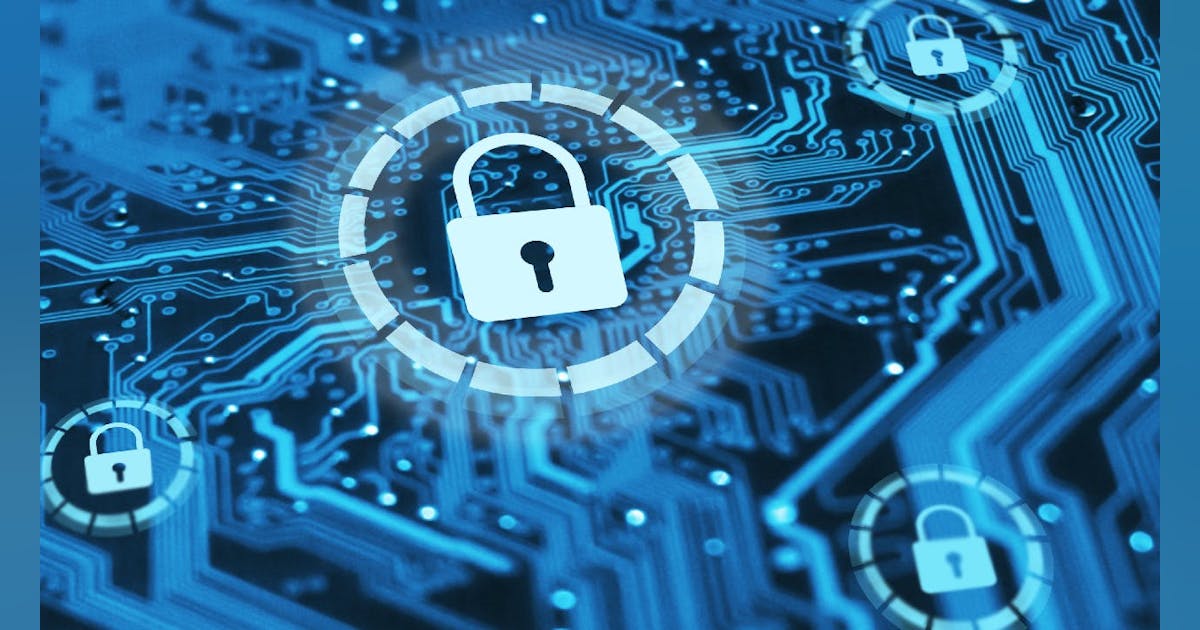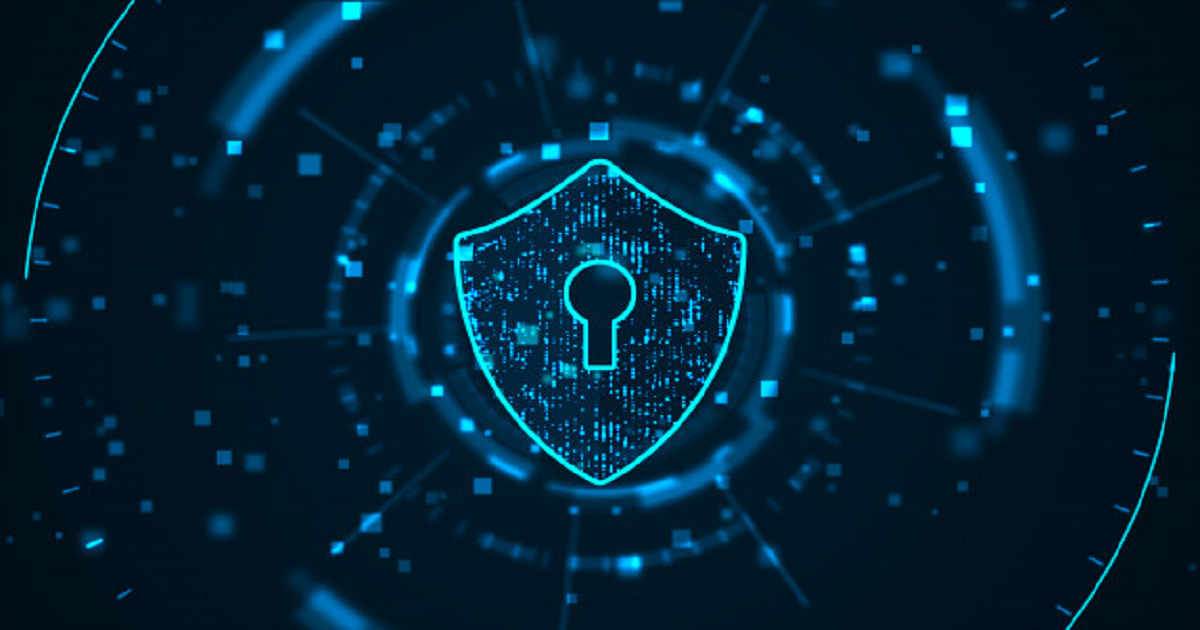Zero-Day Vulnerabilities Exposed: Mitigating Risks and Implementing Proactive Cybersecurity Measures
In the intricate realm of cybersecurity, the term “Zero-Day Vulnerabilities” stands as a sentinel, guarding against the unseen threats that lurk in the digital shadows. This chapter serves as an exploration into the heart of this dynamic menace, revealing its nuances and the pressing need for comprehensive mitigation strategies.
Understanding the Dynamic Threat of Zero-Day Vulnerabilities
At its core, a Zero-Day Vulnerability is a chink in the digital armor—an undisclosed flaw in software that malevolent actors exploit before developers can fortify their defenses. Understanding the dynamic nature of this threat requires a journey into the uncharted territories where these vulnerabilities thrive.
Navigating the Evolving Landscape of Cybersecurity Risks
In the fast-paced world of technology, the landscape of cybersecurity risks undergoes constant metamorphosis. Navigating this ever-evolving terrain demands a vigilant stance, an ability to predict potential threats, and the implementation of proactive measures to safeguard against the unknown.
Delving into the World of Zero-Day Exploits
Defining Zero-Day Vulnerabilities
Zero-Day Vulnerabilities represent the Achilles’ heel of software—unseen weaknesses that, once exposed, can wreak havoc. To comprehend the gravity of these vulnerabilities, it’s essential to dissect their definition and understand the intricate dance between vulnerability and exploitation.
A Comprehensive Overview of Zero-Day Weaknesses
The vulnerabilities in question aren’t monolithic; they come in various shapes and sizes. This section provides a comprehensive overview, delving into the multifaceted nature of Zero-Day Weaknesses and their potential to compromise digital security.
Grasping the Immediate Threat They Pose
Zero-Day Vulnerabilities don’t abide by the rules of engagement—they strike swiftly and with potent immediacy. Understanding the immediate threat they pose is crucial for organizations seeking to fortify their defenses against these unpredictable assailants.
Exploitation Techniques Unveiled
To counteract an adversary, one must first understand their tactics. This segment peels back the layers of Zero-Day Exploits, unveiling the sophisticated techniques employed by cybercriminals to infiltrate and compromise digital systems.
Peering into the Arsenal of Zero-Day Exploit Tactics
The arsenal of Zero-Day Exploit Tactics is both vast and cunning. By peering into this clandestine weaponry, cybersecurity professionals can gain insights into the adversaries’ strategies, enabling more effective defense mechanisms.
Unmasking the Strategies Employed by Cybercriminals
In the shadows of the digital realm, cybercriminals operate with stealth and precision. This part of the chapter aims to unmask their strategies, shedding light on the motivations and methodologies that drive their exploitative endeavors.
The Underground Economy of Zero-Day Exploits
Beneath the surface, a lucrative underground economy thrives on the trade of Zero-Day Exploits. This exploration lifts the veil on this clandestine marketplace, elucidating the motivations behind exploit trading and the implications for digital security.
Exploring the Lucrative World of Zero-Day Markets
Zero-Day Markets are the digital bazaars where exploits change hands for profit. Delving into this world provides a deeper understanding of its dynamics, shedding light on the motivations that fuel this shadowy commerce.
Understanding the Motivations Behind Exploit Trading
The motivations that drive actors in the Zero-Day market extend beyond mere financial gain. This section explores the complex web of reasons behind exploit trading, offering insights into the mindset of those involved.
Real-world Impacts and Case Studies

Case Studies of Noteworthy Zero-Day Incidents
To appreciate the gravity of Zero-Day Vulnerabilities, one must examine real-world incidents. This segment delves into case studies of noteworthy Zero-Day Attacks, extracting lessons from the fallout of these high-profile breaches.
Analyzing High-Profile Zero-Day Attacks
High-profile attacks serve as cautionary tales, illustrating the potential consequences of Zero-Day Exploits. By analyzing these incidents, organizations can glean valuable insights to fortify their defenses.
Lessons Learned from Past Breaches
Every breach is a teachable moment. Extracting lessons from past breaches provides a roadmap for organizations, guiding them on how to shore up vulnerabilities and prevent similar Zero-Day Incidents in the future.
Industries Most Vulnerable to Zero-Day Exploits
Not all sectors face the same level of vulnerability. Identifying the industries most susceptible to Zero-Day Exploits allows for targeted risk assessments and the implementation of sector-specific security measures.
Identifying Sectors at Higher Risk
Certain sectors, due to their nature or criticality, are at a higher risk of Zero-Day Exploits. This section pinpoints these vulnerable sectors, aiding in the development of tailored cybersecurity strategies.
Assessing the Impact on Businesses and Critical Infrastructure
The impact of Zero-Day Exploits extends beyond immediate financial losses. Assessing the broader impact on businesses and critical infrastructure provides a holistic understanding of the repercussions of successful exploits.
The Race Against Zero-Day Exploits
The Concept of Zero-Day and its Timely Challenges
The term “Zero-Day” encapsulates a race against time. Understanding this concept is foundational for grasping the urgency in addressing Zero-Day Vulnerabilities and fortifying digital defenses.
Grasping the Urgency in Addressing Zero-Day Vulnerabilities
Zero-Day Vulnerabilities demand swift and decisive action. This section emphasizes the urgency organizations face in addressing these threats promptly to prevent potential exploits that could compromise their digital assets.
The Continuous Battle to Stay One Step Ahead
In the ever-evolving landscape of cybersecurity, staying ahead is not a luxury—it’s a necessity. This part of the chapter explores the challenges and strategies involved in maintaining a proactive stance against Zero-Day Exploits.
The Role of Security Researchers
At the forefront of the battle against Zero-Day Vulnerabilities are security researchers. This segment aims to shine a light on these unsung heroes, acknowledging their pivotal role in uncovering and mitigating emerging threats.
Unsung Heroes: Researchers in the Pursuit of Zero-Day Discoveries
Security researchers navigate the unknown, uncovering vulnerabilities that threaten digital security. Recognizing and celebrating these unsung heroes is crucial for fostering a resilient cybersecurity community.
Collaborative Efforts to Safeguard Digital Ecosystems
No organization is an island. This section underscores the importance of collaborative efforts and information sharing in safeguarding digital ecosystems against the collective threat of Zero-Day Exploits.
Mitigating Zero-Day Risks

The Significance of Regular Software Updates
Regular software updates are the linchpin of a robust cybersecurity posture. This section elucidates the critical role of timely updates in mitigating Zero-Day Risks and fortifying digital defenses.
Unpacking the Importance of Timely Patching
In the chess match against Zero-Day Vulnerabilities, timely patching is a strategic move. This part unpacks the importance of prompt patching, showcasing its role in the proactive defense against potential exploits.
Challenges Faced in the World of Patch Management
While patching is crucial, challenges abound in the realm of patch management. This segment explores the hurdles organizations encounter and provides strategies to overcome them, ensuring effective Zero-Day risk mitigation.
Responsible Disclosure Practices
Navigating the ethical landscape of Zero-Day Vulnerability disclosures requires a delicate touch. This section explores responsible disclosure practices, striking a balance between security and transparency in the face of discovered vulnerabilities.
Navigating the Ethics of Zero-Day Vulnerability Disclosures
Ethical considerations play a pivotal role in the disclosure of Zero-Day Vulnerabilities. Navigating this ethical terrain requires a nuanced understanding of the potential impacts on security and transparency.
The Balancing Act Between Security and Transparency
Striking a balance between security and transparency is a tightrope walk. This part of the chapter delves into the challenges of maintaining both, ensuring responsible Zero-Day Vulnerability disclosures without compromising overall security.
Emerging Threats and Exploitation Trends

Zero-Day Attacks on Operating Systems
Operating systems, as the backbone of digital infrastructure, are prime targets for Zero-Day Attacks. This section explores the vulnerabilities inherent in operating systems and the strategies for fortifying them.
Assessing Vulnerabilities in Core System Infrastructure
Zero-Day Attacks on operating systems can cripple core system infrastructure. Identifying vulnerabilities in these critical components is essential for implementing targeted security measures.
Strategies for Fortifying Operating Systems
Fortifying operating systems demands strategic planning and implementation. This segment explores effective strategies to enhance the resilience of operating systems against the evolving threat landscape.
Targeting Web Browsers and Applications
Web browsers and applications are common vectors for Zero-Day Exploits. Analyzing the growing threat landscape in these areas is essential for developing effective defense mechanisms.
Analyzing the Growing Threat Landscape for Internet-Facing Software
Internet-facing software presents a broad attack surface. Understanding the evolving threat landscape in this realm is crucial for strengthening defenses against browser and app exploits.
Strengthening Defenses Against Browser and App Exploits
Implementing robust defenses against browser and app exploits involves a multi-faceted approach. This segment explores proactive measures to safeguard digital environments from these specific threats.
The Dark Web Marketplace
Where Zero-Day Exploits are Traded
Beneath the surface of the visible web lies the dark web—a clandestine marketplace for Zero-Day Exploits. This exploration unveils the dynamics of these platforms, shedding light on their role in the broader cybersecurity landscape.
Journey into the Dark Web: Platforms for Exploit Transactions
Venturing into the dark web reveals platforms dedicated to exploit transactions. This section provides insights into the shadowy world where Zero-Day Exploits change hands, often for malicious purposes.
Profiling the Actors Behind Zero-Day Sales
The individuals involved in Zero-Day sales have distinct profiles and motivations. Profiling these actors sheds light on the intricate dynamics of the dark web marketplace and the motivations that fuel it.
Nation-States and Cyber Warfare
State-Sponsored Cyber Warfare
Nation-states actively engage in cyber warfare, leveraging Zero-Day Exploits as weapons. This section delves into the intersection of geopolitics and cybersecurity, unveiling the motivations and implications of state-sponsored cyber activities.
The Intersection of Geopolitics and Cybersecurity
Geopolitics plays a pivotal role in shaping the landscape of cybersecurity. Understanding the intersection of these realms is crucial for comprehending the motivations behind nation-state involvement in Zero-Day Deployments.
Examining Nation-State Involvement in Zero-Day Deployments
Nation-states deploy Zero-Day Exploits for strategic purposes. Examining their involvement provides insights into the geopolitical implications of these cyber activities, shaping the global balance of power.
Impacts on Global Geopolitics
Zero-Day Attacks have ripple effects on global geopolitics. Assessing these impacts is essential for understanding the diplomatic and security ramifications of nation-state-sponsored cyber warfare.
The Ripple Effect of Zero-Day Attacks on International Relations
Zero-Day Attacks create a ripple effect that extends beyond individual nations. This section explores how these incidents influence international relations and cooperation, shaping the diplomatic landscape.
Diplomatic and Security Ramifications
The diplomatic and security ramifications of Zero-Day Attacks are profound. Analyzing these consequences is crucial for governments and organizations to navigate the evolving landscape of cybersecurity threats.
Mitigation Strategies and Best Practices

Adopting a Defense-in-Depth Strategy
A defense-in-depth strategy is paramount in countering Zero-Day Threats. This section explores the layered approaches organizations can adopt to enhance their cybersecurity posture.
Layered Approaches to Counter Zero-Day Threats
Mitigating Zero-Day Threats requires a multifaceted approach. This segment delves into the various layers of defense organizations can implement to safeguard against evolving cyber threats.
Building Resilience in Network and System Defense
Resilience is key to effective cybersecurity. Building resilience in network and system defense involves strategic planning, continuous monitoring, and swift response mechanisms.
Intrusion Detection and Prevention Systems
Leveraging advanced technologies, such as Intrusion Detection and Prevention Systems, is crucial for real-time threat detection. This section explores the role of these systems in proactively preventing Zero-Day Incidents.
Leveraging Advanced Technologies for Real-time Threat Detection
Modern threats demand advanced technologies for real-time threat detection. Exploring these technologies sheds light on their effectiveness in identifying and neutralizing Zero-Day Exploits.
Proactive Measures to Prevent Zero-Day Incidents
Proactivity is the cornerstone of successful cybersecurity. This segment outlines proactive measures organizations can take to prevent Zero-Day Incidents before they occur, establishing a proactive security stance.
Proactive Cybersecurity Measures
Continuous Monitoring for Anomalies
Continuous monitoring is essential for early threat detection. This section explores the role of continuous monitoring in identifying anomalies that could signal potential Zero-Day Threats.
The Role of Continuous Monitoring in Early Threat Detection
Early threat detection hinges on the constant vigilance afforded by continuous monitoring. Understanding its role is crucial for organizations aiming to stay one step ahead of cyber adversaries.
Implementing Proactive Measures to Safeguard Networks
Proactive measures go beyond detection to safeguard networks. This segment provides insights into the implementation of measures that thwart potential Zero-Day Threats, creating a robust security posture.
Threat Intelligence Integration
Threat intelligence is a powerful tool in cybersecurity. Integrating threat intelligence effectively into security postures enhances an organization’s ability to anticipate and counter Zero-Day Threats.
Harnessing the Power of Threat Intelligence in Cybersecurity
Threat intelligence is a valuable asset in the fight against cyber threats. This section explores the intricacies of harnessing this power to bolster cybersecurity defenses and proactively counteract emerging threats.
Strategies for Effective Integration into Security Postures
Effective integration of threat intelligence requires strategic planning. This segment outlines practical strategies for seamlessly incorporating threat intelligence into comprehensive security postures.
Collaboration and Information Sharing

Public-Private Partnerships in Cybersecurity
Collaboration between government and private entities is instrumental in cybersecurity. This section explores the dynamics of public-private partnerships and their role in defending against Zero-Day Threats.
Fostering Collaboration Between Government and Private Entities
Governments and private entities must collaborate to effectively combat cyber threats. This segment emphasizes the importance of fostering strong partnerships for a collective defense against Zero-Day Threats.
Strengthening the Collective Defense Against Zero-Day Threats
A collective defense is paramount in the face of Zero-Day Threats. This section delves into collaborative efforts aimed at strengthening the overall cybersecurity posture across industries and sectors.
Industry Collaboration to Combat Zero-Day Threats
Cross-sector collaboration is essential for tackling cybersecurity challenges. This segment explores how industries can unite forces to share insights and intelligence, creating a safer digital landscape.
Cross-Sector Collaboration: Uniting Forces to Tackle Cybersecurity Challenges
Collaboration across sectors enhances the collective ability to tackle cybersecurity challenges. This section delves into the benefits and strategies of cross-sector collaboration in combating Zero-Day Threats.
Sharing Insights and Intelligence for a Safer Digital Landscape
Information sharing is a cornerstone of effective cybersecurity. This segment emphasizes the importance of sharing insights and intelligence to collectively create a safer digital landscape.
Investing in Cybersecurity Education

Building a Skilled Workforce
A well-educated workforce is indispensable in the fight against cyber threats. This section explores the imperative of nurturing a skilled cybersecurity workforce through education.
The Imperative of a Well-Educated Cybersecurity Workforce
The need for a well-educated cybersecurity workforce is more critical than ever. This segment outlines the imperative of investing in education to build a skilled cadre of professionals capable of navigating the complex landscape of cybersecurity.
Addressing the Talent Gap Through Education and Training
A talent gap exists in the cybersecurity industry. Addressing this gap requires strategic education and training initiatives to prepare the next generation of cybersecurity experts.
The Role of Certifications and Training Programs
Certifications play a crucial role in validating cybersecurity expertise. This section explores the significance of certifications and targeted training programs in shaping a competent workforce.
Recognizing the Value of Certifications in Cybersecurity
Certifications serve as benchmarks for cybersecurity proficiency. Recognizing their value is essential for individuals and organizations seeking to establish and validate expertise in the field.
Nurturing Talent Through Targeted Training Initiatives
Nurturing cybersecurity talent involves targeted training initiatives. This segment delves into the importance of strategic training programs in developing a skilled and adaptable workforce.
Legal and Ethical Considerations
The Legal Landscape of Zero-Day Exploits
Navigating the legal complexities surrounding Zero-Day Exploits is essential. This section explores the legal landscape and the challenges associated with prosecuting cybercriminals engaged in these activities.
Navigating the Complex Legalities Surrounding Zero-Day Incidents
Zero-Day Incidents pose unique legal challenges. Navigating the complex legalities involves understanding the nuances of cyber law and its application in prosecuting offenders.
Legislative Measures to Combat Cybersecurity Threats
Governments worldwide are enacting legislation to combat cybersecurity threats. This segment explores legislative measures aimed at deterring and penalizing those engaged in Zero-Day Exploits.
Ethical Considerations in the Cybersecurity Community
Ethical considerations play a pivotal role in the cybersecurity community. This section delves into the ethical dimensions of Zero-Day research and disclosure, emphasizing responsible practices.
Exploring the Ethical Dimensions of Zero-Day Research and Disclosure
Zero-Day research and disclosure involve ethical considerations. Exploring these dimensions is crucial for maintaining integrity and transparency within the cybersecurity community.
Promoting Responsible Practices in the Industry
Promoting responsible practices is essential for fostering trust and collaboration. This segment outlines strategies for promoting ethical behavior within the cybersecurity industry.
Future Trends in Zero-Day Vulnerabilities
Artificial Intelligence in Zero-Day Detection
The integration of artificial intelligence revolutionizes Zero-Day detection. This section explores the role of AI in anticipating and countering emerging Zero-Day Threats.
Exploring the Role of AI in Anticipating and Countering Zero-Day Threats
Artificial intelligence is at the forefront of Zero-Day detection. Exploring its evolving role provides insights into the future of proactive cybersecurity measures.
The Future of Machine Learning in Cybersecurity
Machine learning is shaping the future of cybersecurity. This segment delves into the transformative potential of machine learning in adapting to and mitigating Zero-Day Vulnerabilities.
Quantum Computing’s Impact on Cybersecurity
Quantum computing introduces a paradigm shift in cybersecurity. This section anticipates the impact of quantum computing on the threat landscape and the challenges it poses.
Anticipating the Paradigm Shift: How Quantum Computing Alters the Cybersecurity Landscape
The advent of quantum computing alters the very fabric of cybersecurity. Anticipating this paradigm shift is crucial for preparing organizations to navigate the evolving threat landscape.
Preparing for the Quantum Threat in a Zero-Day World
Preparing for the quantum threat involves strategic planning and innovation. This segment outlines the steps organizations can take to fortify their cybersecurity defenses in a quantum-powered era.
Conclusion
Staying Vigilant in the Face of Evolving Threats
The conclusion underscores the perpetual need for vigilance in cybersecurity. Staying ahead of evolving threats requires continuous adaptation, collaboration, and a commitment to proactive measures.
The Ever-Changing Nature of Cybersecurity and the Need for Vigilance
As the cybersecurity landscape evolves, so must our approach. This section emphasizes the dynamic nature of the field and the ongoing need for vigilance to safeguard digital ecosystems.
Empowering Organizations and Individuals to Navigate the Digital Future
Empowering organizations and individuals is the key to a secure digital future. This concluding segment encourages a collective commitment to proactive cybersecurity measures for a resilient and secure tomorrow.
Frequently Asked Questions (FAQ)
What are Zero-Day Vulnerabilities?
Zero-Day Vulnerabilities are undisclosed flaws in software that malicious actors exploit before developers can patch them. These vulnerabilities pose a significant threat as they are leveraged on “Day Zero” of their discovery.
Why are Zero-Day Vulnerabilities a Concern?
Zero-Day Vulnerabilities are concerning because they are unknown to software vendors, making them susceptible to exploitation. Cybercriminals exploit this window of opportunity, potentially causing severe damage to digital systems.
How do Zero-Day Exploits Work?
Zero-Day Exploits take advantage of vulnerabilities in software that developers are unaware of. Cybercriminals use these exploits to infiltrate systems, compromise data, and launch attacks without giving the target a chance to defend itself.
What Motivates Cybercriminals to Exploit Zero-Day Vulnerabilities?
Cybercriminals exploit Zero-Day Vulnerabilities for financial gain, political motives, or to establish dominance in the cyber realm. The underground economy of Zero-Day markets also fuels this activity.
How Can Organizations Mitigate Zero-Day Risks?
Mitigating Zero-Day Risks involves adopting a defense-in-depth strategy, timely patching, and implementing proactive measures. Continuous monitoring, threat intelligence integration, and collaboration with security researchers are also crucial.
What is the Role of Security Researchers in Addressing Zero-Day Threats?
Security researchers play a pivotal role in uncovering and mitigating Zero-Day Threats. Their efforts contribute to understanding vulnerabilities, enabling organizations to develop effective defense mechanisms.
How Do Zero-Day Attacks Impact Businesses and Critical Infrastructure?
Zero-Day Attacks can have severe consequences, impacting businesses financially and compromising critical infrastructure. The potential for data breaches, service disruptions, and reputational damage is substantial.
What Steps Can Organizations Take to Stay Ahead in the Race Against Zero-Day Exploits?
Staying ahead requires a continuous battle against evolving threats. Organizations should prioritize regular software updates, embrace responsible disclosure practices, and collaborate with the broader cybersecurity community.
How Can the Dark Web Marketplace be Addressed in the Context of Zero-Day Exploits?
Addressing the dark web marketplace involves understanding its dynamics, profiling actors behind Zero-Day sales, and implementing measures to curb exploit transactions. Enhanced cybersecurity policies and international collaboration are essential.
What is the Intersection Between Nation-States and Zero-Day Vulnerabilities?
Nation-states engage in cyber warfare using Zero-Day Exploits as weapons. The intersection of geopolitics and cybersecurity highlights the motivations, impacts, and diplomatic ramifications of state-sponsored cyber activities.
What Best Practices Exist for Mitigating Zero-Day Threats?
Best practices include adopting a defense-in-depth strategy, implementing layered approaches to counter threats, building resilience in network and system defense, and leveraging advanced technologies like Intrusion Detection and Prevention Systems.
How Does Collaboration and Information Sharing Strengthen Defenses Against Zero-Day Threats?
Collaboration, public-private partnerships, and cross-sector information sharing are vital for strengthening defenses. These efforts create a collective defense against Zero-Day Threats by sharing insights and intelligence.
What Role Does Education Play in Mitigating Zero-Day Vulnerabilities?
Education is crucial for building a skilled cybersecurity workforce. Addressing the talent gap through certifications, training programs, and nurturing talent with targeted initiatives is essential for combating Zero-Day Vulnerabilities.
What Legal and Ethical Considerations Surround Zero-Day Vulnerability Disclosures?
Navigating the legal landscape involves understanding complex legalities, legislative measures, and ethical considerations. Responsible disclosure practices aim to strike a balance between security and transparency.
How Do Emerging Technologies Like AI and Quantum Computing Impact Zero-Day Vulnerabilities?
Artificial intelligence revolutionizes Zero-Day detection, and quantum computing introduces a paradigm shift. Understanding the role of these technologies helps organizations prepare for the future of cybersecurity.
Why is Vigilance Crucial in the Face of Evolving Cybersecurity Threats?
The dynamic nature of cybersecurity demands continuous vigilance. Staying ahead of evolving threats requires a commitment to proactive measures, collaboration, and an understanding of the ever-changing digital landscape.
How Can Organizations and Individuals Empower Themselves to Navigate the Digital Future Securely?
Empowerment involves adopting proactive cybersecurity measures, staying informed about emerging threats, and fostering a culture of vigilance. It requires a collective commitment to building a secure digital future.
Stay Tuned On Our Content
Welcome, dear readers, to the captivating world of cybersecurity! As you embark on this journey with us, we invite you to delve deeper into the intricacies of the cyber threat landscape. Our latest piece, Navigating the Cyber Threat Landscape: Insights into Emerging Risks and Protective Measures, unravels the complexities of emerging risks and unveils effective protective measures. Take a moment to explore the depths of our insights, enriching your understanding of the ever-evolving digital security realm. Your knowledge is the key to staying one step ahead, and this piece is your guide.
In the vast sea of cybersecurity knowledge, we encourage you to broaden your horizons by exploring various perspectives. A noteworthy read, Zero-Day Exploits: Understanding the Threat to Business Security, offers valuable insights into the menacing world of Zero-Day vulnerabilities. Authored by industry experts, this external piece provides a unique angle on the threats businesses face and the measures to secure their digital assets. Diversify your understanding, and let this piece be a beacon guiding you through the intricacies of safeguarding against Zero-Day exploits in the corporate landscape. Stay informed, stay secure!
Best Regards,
Leep Team
[email protected]





One Response